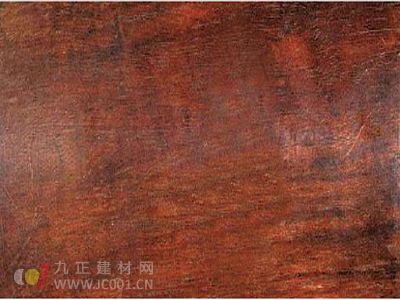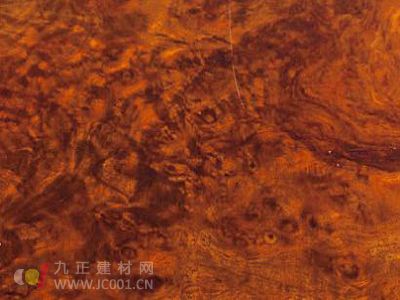In order to present the information more clearly and professionally, this article will use the term "rosewood" or specific professional names instead of "grass pear." It's important to note that the article does not support the common market practice of referring to Asian rosewood as "grass pear."
According to the national standard for redwood, there are seven types of red rosewood. Among them, the most highly regarded is the Yuedalian sandalwood, which is mainly found in the Indochina Peninsula. This wood is abundant in Vietnam and Cambodia, with an air-dry density ranging from 0.94 to 1.01 g/cm³. The heartwood color varies from reddish brown to purple-red, often featuring dark stripes. Another high-quality type is the bird’s foot rosewood, found in the tropical regions of the Central South Peninsula, mainly Laos and Thailand. Its air-dry density is also between 0.96 and 1.01 g/cm³, with a similar heartwood color and dark streaks.
This article will focus on two historically significant types of rosewood used in China: large fruit rosewood and Indian rosewood.


Large fruit rosewood, commonly known as Burmese rosewood, was the primary material used during the Qing Dynasty. Many classic pieces of furniture were made from this wood, and it is known for its fine quality. It is mainly sourced from Myanmar, Thailand, and Laos. The grain is clear, with heartwood colors ranging from orange-red to purple-red, often accompanied by dark stripes. When scratched, the marks are visible, and when soaked in water, the wood turns light yellow-brown with little or no fluorescence. The wood has thick fiber walls and a fine, uniform structure. Its air-dry density ranges from 0.80 to 0.86 g/cm³. Due to its long-lasting fragrance, it is also referred to as "fragrant pear."
Indian rosewood, also known as rosewood, is another traditional material used in Chinese furniture. It is a large deciduous tree, reaching up to 20–25 meters in height, with dark brown bark and straight trunks. Native to South Asia, Southeast Asia, and parts of the Pacific, including the Solomon Islands and Papua New Guinea, it can also be found in small quantities in Guangdong and Yunnan, China. Indian rosewood has distinct growth rings, with heartwood colors ranging from reddish brown to golden yellow, often featuring dark streaks. When soaked, the water turns dark brown and may show fluorescence. Its air-dry density ranges from 0.53 to 0.94 g/cm³. Some scholars argue that although it is listed under the national redwood standard, many samples do not meet the required density of 0.76 g/cm³, leading some to classify it as "Asian pear." However, the author believes that those Indian rosewoods meeting the standard should be considered true redwood, while others should be classified as non-redwood, applying equally to redwood plantations.
Interestingly, Indian rosewood flowers once a year, typically in April, and is known as the "flower of one day." Despite its shallow roots, making it vulnerable to storms, it is highly regenerative and can grow back from broken branches.
Distinguishing Between "Grass" and "Yellow" Pear
In Ming and Qing dynasty furniture, a lot of rosewood pieces have survived. Some of the imperial furniture in the Forbidden City was also made from rosewood. When I visited the Forbidden City, I saw these pieces firsthand. However, both the name and appearance of rosewood and huanghuali (yellow flower wood) are quite similar, making it hard to tell them apart at first glance. Industry experts often debate the identification of old furniture materials due to their similar appearance. For consumers unfamiliar with wood types, it can be very challenging to make accurate judgments.
During the Ming and Qing dynasties, rosewood and huanghuali were not strictly separated. Imported rosewood and Dalbergia sinensis from Hainan Island were both referred to as "pear," but they are different species of wood.
Rosewood belongs to the legume family and includes around 70 species. In addition to sandalwood, other types are also categorized as rosewood. According to the national redwood standard, the remaining 62 species that do not meet the air-dry density of 0.76 g/cm³ are not considered redwood and are collectively called "Asian pear." Some unscrupulous merchants in the market sell non-redwood wood as huanghuali or mahogany by dyeing, aging, or surface treatment. These woods are usually lighter in weight, looser in texture, have longer brown eyes, and appear mostly red or light red, typically in large diameter pieces measuring 80cm–160cm.
Huanghuali wood is extremely stable, resistant to warping, cracking, or twisting, and has good flexibility, making it ideal for furniture. Its color is bright, and the grain is fine and clear. In contrast, Asian pear wood tends to be rougher, with larger brown eyes and a dull, yellowish tone.
To identify whether an antique piece is rosewood or huanghuali, you can look for certain features. Huanghuali patterns are delicate, vivid, and identifiable, with most black lines forming patterns. Occasionally, you might see dark brown or red lines, and even "ghost faces." Good huanghuali has excellent oil content, and the furniture is less likely to deform. Rosewood patterns are more scattered, lack a consistent design, and have coarser grain and thicker brown eyes. Another key point is that if the furniture has characteristics typical of late Qing or Republic of China styles, it is more likely to be rosewood, so be cautious.
Wooden Table Top,Laminate Wood Table Top,Solid Wood Table Top,Coffee Table Top Solid Wood
Changzhou Offistyle Furniture Co., Ltd. , https://www.offistylefurniture.com